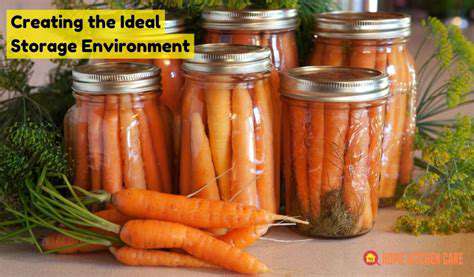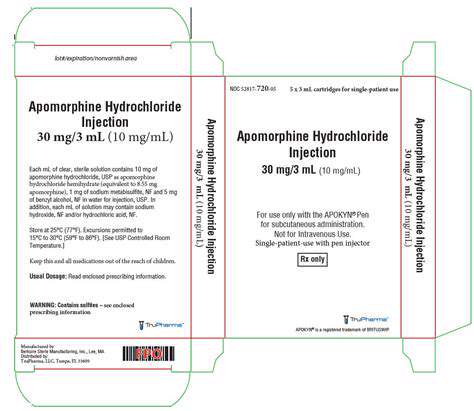Storing Garlic in a Cool, Dry Place: Best Practices
Aug 16, 2025 / btwgardenmachine/
Choosing the Right Garlic for Storage
Factors to Consider When Selecting Garlic for Storage
Choosing the right garlic bulbs for long-term storage involves more than just selecting the largest or most visually appealing ones. A crucial aspect is assessing the overall health and ripeness of the bulbs. Look for firm, heavy bulbs with tightly closed, unblemished cloves. Bulbs that feel soft or have open cloves are more susceptible to spoilage and should be avoided, even if they appear appealing at first glance. Proper selection during harvest significantly impacts the longevity and quality of your stored garlic.
Another important factor is the type of garlic you're dealing with. Hardneck garlic, often preferred for its flavour, tends to have a more delicate structure compared to softneck varieties. Hardneck garlic's more fragile nature makes it a bit more sensitive to storage conditions and handling. Understanding the inherent characteristics of the garlic type you're selecting will help you adjust your storage methods accordingly to maximize its lifespan.
Proper Handling and Preparation for Storage
Once you've chosen the ideal garlic bulbs, careful handling is essential to maintain their integrity. Gently brush off any loose soil or debris, being mindful not to damage the bulbs. Avoid washing the bulbs before storage, as moisture can encourage mold and rot. Allow the garlic to cure completely in a well-ventilated area for a few weeks after harvesting. This curing process allows the bulbs to dry out and toughen the protective layers, making them more resistant to spoilage during storage.
After curing, carefully separate the bulbs. Remove any damaged or diseased bulbs, as they can quickly contaminate the rest. Storing the garlic in the correct environment, such as a cool, dry place, is essential. For the best results, store the bulbs in a dark, cool, and well-ventilated location to prevent moisture buildup, which is a major cause of garlic rot. Proper preparation and handling during the initial stages are paramount to successful long-term storage.
A crucial step in preparation is to separate the cloves from the bulb. Removing the cloves allows for individual storage in paper bags or other containers, which can be more convenient and space-saving. This also allows for easier access to individual cloves as needed, avoiding having to take the whole bulb out at once.
The process of separation also allows you to inspect the cloves for any signs of damage or decay. Discard any compromised cloves immediately to prevent contamination of the remaining cloves. Proper handling and separation are key steps to maintain the quality and freshness of your garlic throughout its storage period.

Proper Handling Before Storage
Pre-Storage Cleaning
Thoroughly cleaning your garlic bulbs before storing them is a crucial step in preserving their freshness and preventing spoilage. Remove any loose or damaged cloves, and gently brush off any dirt or debris. This simple action helps to eliminate potential pathogens and moisture, both of which can accelerate the rotting process. Pay particular attention to the areas where cloves are attached to the bulb; these areas are often more vulnerable to bacteria and mold.
Using a soft brush or a damp cloth, clean the entire bulb thoroughly. Avoid using harsh chemicals or scrubbing too vigorously, as this can damage the garlic's protective outer layers, making it more susceptible to moisture damage. Once cleaned, allow the garlic to air-dry completely before storing it in a cool, dry location.
Inspecting for Damage
Before storing your garlic, take a moment to inspect each bulb for signs of damage. Look for any soft spots, mold, or discoloration. Even a tiny, seemingly insignificant blemish can lead to rapid spoilage if left in storage. Discard any bulbs that show signs of rot, as they can quickly contaminate healthy garlic, ruining the entire batch.
Identifying and removing damaged cloves or bulbs before storage is critical to maintaining the quality and longevity of your garlic harvest. Inspecting your garlic carefully ensures that you're not introducing any potential sources of rot into your storage environment, which can significantly impact the freshness of your remaining garlic cloves.
Separating Cloves from Bulbs
For optimal storage, it's often beneficial to separate the cloves from the bulb. This allows for quicker drying and individual inspection of each clove. Once the bulb has been cleaned and examined for damage, gently pull the cloves apart from the bulb. Be careful not to damage the cloves during this process.
Proper Drying Technique
Allowing the garlic to dry thoroughly before storing is essential. Place the cleaned and separated cloves on a paper towel-lined tray or rack. Ensure they are spaced out to allow for proper air circulation. Air drying helps to prevent moisture buildup, which is a primary cause of spoilage. A dry environment is crucial for preventing mold growth and maintaining optimal flavor and texture.
A well-ventilated area, away from direct sunlight, is ideal for this drying process. The time required for drying will vary depending on the humidity levels and the size of the cloves. It's best to monitor the cloves regularly until they are completely dry to the touch.
Storing in the Right Container
Once the garlic is completely dry, store it in an appropriate container. Airtight containers, such as glass jars or sealed plastic bags, work well, but ensure the containers are not overly full. Proper ventilation is essential, to prevent moisture from accumulating in the storage environment. Consider using paper bags or mesh bags for better air circulation.
Storing garlic in a cool, dark, and dry place, away from direct sunlight and moisture, is vital for its longevity. This will help prevent the growth of mold and other microorganisms, preserving the flavor and texture of your garlic for longer periods.
Tips for Extending Garlic's Shelf Life

Proper Storage Conditions
Maintaining the ideal environment for garlic storage is crucial for extending its shelf life. Storing garlic in a cool, dark, and dry place is paramount. Avoid areas with fluctuating temperatures or excessive moisture, as these can lead to rapid spoilage and encourage mold growth. A cool pantry or cellar are excellent options, offering a stable environment that helps garlic retain its freshness for weeks.
A consistent temperature range between 50-60°F (10-15°C) is optimal. This temperature range minimizes enzymatic activity, which is a major contributor to garlic's decay. Therefore, keeping the garlic in a stable environment is key to ensuring it lasts longer.
Choosing the Right Garlic
Selecting firm, unblemished garlic heads is essential for extended storage. Look for garlic with intact, dry, and papery skins. Avoid garlic with soft spots, bruises, or signs of sprouting, as these are indicators of potential spoilage. Choosing healthy garlic at the outset is the first step in preserving its quality.
Optimizing Storage Containers
Proper containers can greatly influence garlic's shelf life. Choose breathable containers like mesh bags, paper bags, or even loosely fitting cardboard boxes. These allow for air circulation, preventing moisture buildup that can lead to rot. Avoid airtight containers, as they can trap moisture and accelerate decay.
Preventing Moisture Buildup
Moisture is a garlic's worst enemy. Excessive moisture can lead to rapid deterioration and the development of mold. Ensure that the storage environment is well-ventilated and that the garlic heads are not stored directly on damp surfaces. A well-ventilated area is a crucial factor for preventing moisture buildup.
Keeping the garlic heads separated from each other allows for proper air circulation around each bulb, which helps prevent moisture buildup and the spread of rot. This simple step can significantly extend the storage life of your garlic.
Controlling Temperature Fluctuations
Temperature fluctuations are detrimental to garlic's longevity. Unpredictable temperature changes can accelerate the deterioration process. Storing garlic in a location that maintains a consistent temperature is crucial for preserving its quality. This is essential to prevent premature sprouting or rotting.
Removing Damaged Bulbs
Regularly inspect your stored garlic for any signs of damage, such as sprouting, soft spots, or discoloration. Immediately remove any affected bulbs to prevent the spread of rot to other garlic heads. Prompt removal of damaged bulbs is crucial for maintaining the quality of the remaining garlic.
Freezing Garlic for Extended Storage
For even longer-term storage, consider freezing garlic. Freezing garlic cloves or minced garlic can preserve their flavor and nutrients for months. Blanching cloves before freezing helps maintain their texture and flavor. You can chop or mince your garlic and freeze it in ice cube trays or zip-top bags for easy portioning.